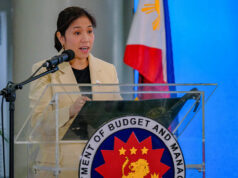Banks urged to go into microfinance
THE BANKING INDUSTRY should tap the large microfinance market despite the challenges it poses as it is seen to contribute to the development of other sectors which use financial services and ultimately help boost economic growth.
Speaking to delegates and top officials of banks around the world during the 36th Asian Bankers Association Conference held in Makati City yesterday, Rizal Microbank President Raymundo C. Roxas said there is a huge market to tap for microfinancing in poor and low income households and micro-enterprises which belong to the D and E classes.
“We have to remember that most of the end-users are consumers that patronize the products and services of the large companies we serve belong to the base of pyramid and there are a quite number of them. If we do our part in ensuring that these market segments are made part of inclusive growth and development, then we are also ensuring the fate and future of other customers and clients, and ultimately, the fate and future of our own organizations,” Mr. Roxas said.
However, he cited the challenges in venturing into microfinance, including the market’s lack in financial literacy, having minimal real estate properties and fixed assets to offer as collateral, as well as clients having labor-intensive work who are mostly intimidated to go to banks.
“Microfinance clients are geographically dispersed and mostly are found in rural areas, they have no financial records or credit history with formal institutions, they have minimal savings or none at all, and they have limitation in producing valid IDs,” he added.
In fact, Rizal Microbank, the microfinance arm of Yuchengco-led Rizal Commercial Banking Corp., took eight years “to attain a significant portfolio to post a profit” as its loan book needed time to grow since loan sizes are relatively small, he explained.
“With more available technology, the challenge of pursuing the unbanked and the underserved market segments due to the unintended high costs, can now be better addressed and improved,” Mr. Roxas said.
For Philippine National Bank President and CEO Jose Arnulfo A. Veloso, it is up to the industry to “aid the unbanked” and service those who borrow from informal sources from the risks of exploitation, even though he himself admitted that this task is challenging.
As applicants find it difficult to acquire required documents, especially those in the provinces, Mr. Veloso said a national ID system will improve banks’ assessment of applicants and help them process and approve credit faster.
“The road to digital has never been a smooth ride — more so in the Philippines. Friends and colleagues — the digital divide is real and is a serious issue in our country. Inter-connectivity remains to be an issue and price of telecommunications is still relatively expensive for many Filipinos,” he said in his speech in the same forum.
He said that of the country’s total population of over 100 million, 15% still live in municipalities without financial services, while 34% have bank accounts and “a very small number” of 2.6% of the population have borrowed from a bank. — Beatrice M. Laforga



